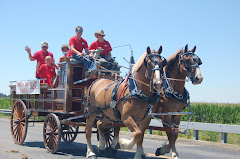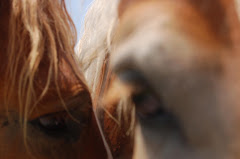On December 15, 2008, the state of Kentucky confirmed that a quarter horse stallion was positive for Contagious Equine Metritis or CEM. CEM is considered a foreign animal disease in the United States. It was first discovered in Europe in 1977. Because stallions being imported into the United States must be quarantined, tested and treated before being released into the country, CEM has only appeared twice outside the quarantine stations. In 1979, there was an outbreak. And in 2006, three Lipizzaner stallions imported from Eastern Europe tested positive after their arrival but before they had been used for breeding.
What Is Contagious Equine Metritis?
CEM is a sexually transmitted disease among horses caused by a bacteria
Taylorella equigenitalis. Clinical signs may include a mucopurulent vaginal discharge, abortion and infertility. Stallions typically show no clinical signs. Stallions and mares can become chronic carriers of CEM and be sources of infection for future outbreaks. The transmission rate is high and occurs by natural mating. However, contaminated instruments and equipment used for artificial insemination can be an indirect source. The bacteria can also be spread via semen collected for artificial insemination. The disease is treatable with disinfectants and antibiotics.
The last report I read states that the USDA has identified 19 positive stallions and five positive mares. An additional 904 horses have been exposed to CEM. An exposed horse is one that was bred to a positive horse either naturally or via artificial insemination. A horse can also be deemed exposed if epidemiologically linked to a positive horse. State and Federal health officials have conducted the investigation by examining the breeding records and movement history of each infected horse to find other exposed animals. At each step, any exposed animals are quarantined, tested and treated. Owners of exposed horses are contacted by State or Federal animal health officials. There is no need to have your horse tested if you have not been contacted.
These 928 horses are located in 48 states. Exposed mares must have three negative cultures taken 3 days apart. Even if the exposed mare tests negative, she then must go through 5 consecutive days of treatment. Exposed stallions must also be cultured. After a negative culture is determined, the stallion must naturally breed two test mares and the mares must be then cultured. The exposed stallion is then treated for five consecutive days. The culturing, treating and test breeding must be done by an accreditated veterinarian and overseen by a USDA/APHIS veterinarian. While the majority of exposed horses will end up being negative, you can see why this investigation will take a long time because of the prolonged testing and treating that is required. Because of the expanse of this investigation, the source of the outbreak has not been identified. However, State and Federal animal health officials continue to pursue all information obtained from this outbreak.
I was involved in the testing of an exposed mare. While the entire procedure went smoothly and the mare was negative, it was expensive and time consuming. However, as costly and involved as the testing efforts of exposed horses are, they are crucial due to the potentially even more costly consequences to the equine industry and government if CEM becomes established throughout the US and Canada.












